4 farmers outline bale grazing benefits in field lab trial
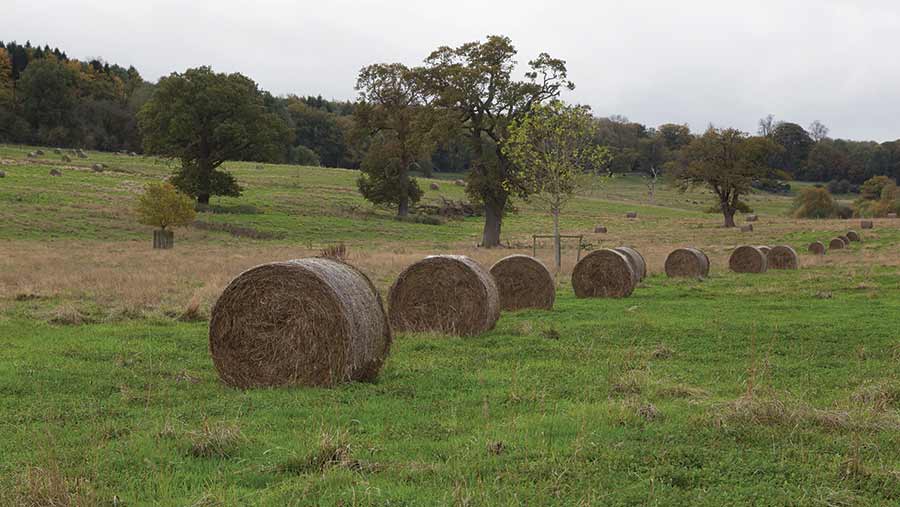 Bale grazing at FAI Farms © MAG/Judith Tooth
Bale grazing at FAI Farms © MAG/Judith Tooth A group of farmers is taking part in a four-year project to explore the impact of bale grazing on forage quality and soil health.
The Innovative Farmers field lab will fill a research gap: to date, there have been no published, UK-based trials to quantify the practice, which involves outwintering on bales rolled out within a paddock management system similar to mob-grazing.
We speak to four of the six farmers to find out about their experiences of bale grazing so far.
See also: FW Awards 2022: Mixed Farmer of the Year finalists
FAI Farms, Oxfordshire
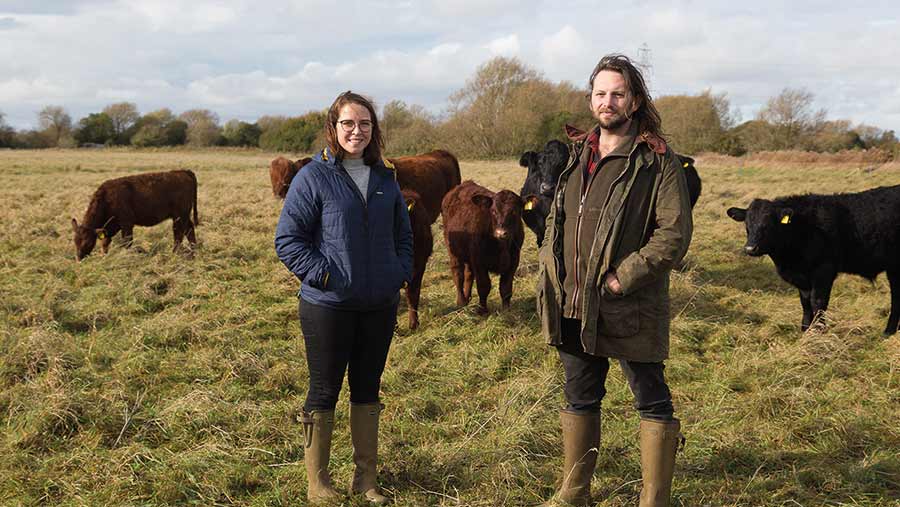
Annie Rayner and Silas Hedley-Lawrence © MAG/Judith Tooth
Bale grazing is in its fourth year at FAI Farms, a 567ha (1,400-acre) organic farm on medium heavy clay in the floodplain of the River Thames.
“Planning is key – I’m doing this now for next winter,” says farm manager Silas Hedley-Lawrence.
He is calculating feed requirements and plotting the layout of grazing cells for daily moves using AgriNet software.
He maps 160 cells of 0.5ha on a block of parkland, each with five round bales of hay made from the floodplain meadows.
“If it’s very wet, the cattle might get 1ha instead, or we might move them more frequently,” Silas explains.
The previous system of winter housing cost £2.40 a cow and calf a day (calculated before recent high inflation). He costs bale grazing at £1.04 a cow and calf a day – a saving of £1.36.
For a 100-cow herd and an average housing period of 180 days, the overall saving is £24,480. And for growing stock, the daily saving is even greater, at £1.49 a head a day.
“It’s a huge cost saving,” he says. “We’ve also seen massively improved diversity in the sward, and infiltration rates have gone from more than two hours four years ago to less than 30 seconds now.”
Gowbarrow Hall Farm, Lake District
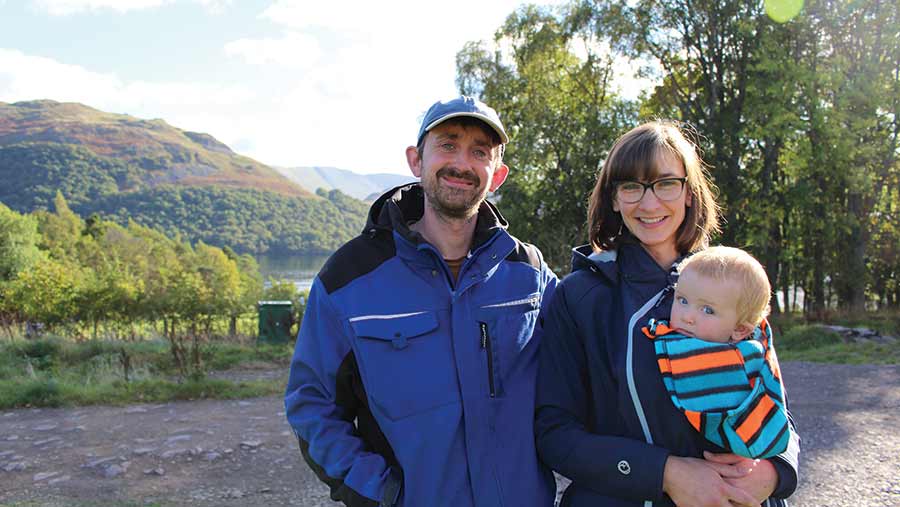
Sam and Claire Beaumont © Sarah Alderton
Claire Beaumont farms 186ha (460 acres) at Gowbarrow Hall Farm, of which 156ha (385 acres) is a mix of meadows, rough grazing and wood pasture grazed by 63 head of Shorthorn cattle.
Last winter, following a small trial in a rough field the previous year, 34 bales were set out in a 5ha (12-acre) field that had been rested for 10 months.
They fed 32 cattle for 34 days in February/March, forming a bridge between winter and the growing season.
“I was quite surprised by how little hay you lose – about 10% the cows don’t eat – and this gets rotted down,” says Claire.
“After bale grazing, there were some areas of poaching, but we saw this as an opportunity for seeding.
“The field is not species rich, but there are definite changes.” She plans to use species-rich hay from another farm to introduce more diversity into the sward for bale grazing next winter.
Baston Hall, Malvern Hills
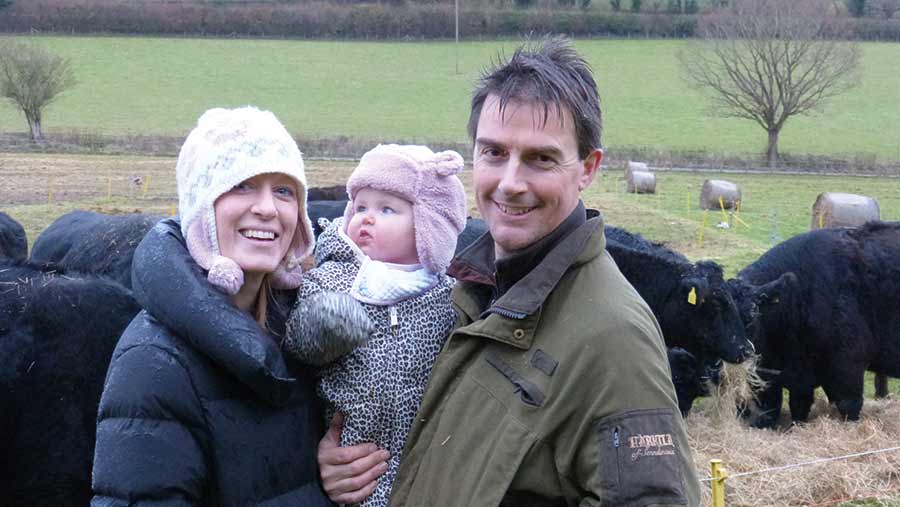
Rosanna and Ian Horsley © MAG/Michael Priestley
Cows bale-graze with calves at foot at Baston Hall, where Ian Horsley has completed his second winter trialling the system.
He runs 18 pedigree Aberdeen Angus cows and followers and 45 sheep on 36ha (90 acres) of grazing.
In 2021-22, he ran 14 cows and 10 calves (14.2 livestock units (LU)) on 1.4ha (3.5 acres) for 43 days.
They then bale-grazed a second area for 34 days in March/April and used a total of 90 bales across the two systems.
Despite a wet December, the ground recovered, and Ian expanded the area of bale grazing in the second winter, to 80 25x25m cells for 13 cows and calves, and seven yearlings – a 45% increase.
These animals used 140 bales over 94 days at a cost of £22.50/day, or £1.09/LU a day, compared with £2.82/LU a day when housed.
“This time, snow in March was challenging and made the area very wet, very quickly,” he says.
“Sections of the field have been damaged – parts of 10 cells out of 80, so about 2%. It’s not too bad, but there’s room for improvement.”
Whitriggs Farm, Scottish Borders
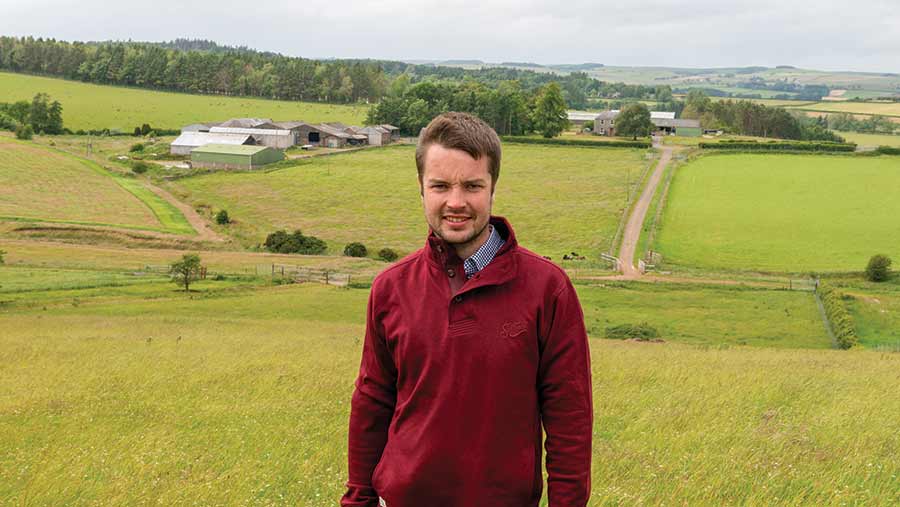
Stuart Mitchell © Angus Findlay
Bale grazing has resulted in big savings for Stuart Mitchell, now in his fourth year of the system.
His fittest 60 cows winter on the hill with one bale/day, while 40 bulling heifers and first-calved heifers outwinter on lower land on the same system.
He costs housing 140 cows for six months at £18 a cow a week at a total of £60,480.
By contrast, outwintering 100 cows at £4.50/day and housing 40 for four months costs a total of £23,760 – a saving of £36,720, or £262 a cow.
And rather than using four hours of labour a day, the system requires just one.
By mob-grazing through the summer on herbal leys, hay can be made from the 405ha (1,000-acre) organic farm’s permanent pasture. Calves are weaned before the cows go on the hill.
“The cows eat 50% hay, 50% grass, and if they go on the hill in good condition, they come back off OK, five days before calving,” says Stuart.
“They have to cope with the system and get back in-calf within six weeks, no excuses.”
Seventh farmer joins field lab
AHDB beef and sheep monitor farmer Harry Sordy, has been trialling bale grazing at a 1,400ha (3,459-acre) Alnham Farm in Northumberland.
He has recently joined the Innovative Farmers field lab.
The move comes as the AHDB prepares to carry out a broader cost-benefit analysis of the practice.
“It’s evident bale grazing is becoming more popular, with cost savings, better soil carbon management and improvements in animal health,” says AHDB senior knowledge exchange manager Katie Evans.
“The field lab is a really interesting project with a great group of farmers, and including Harry’s farm will help get more knowledge out and put more data behind the claims.”
The four farmers were speaking at Groundswell (28-29 June)
